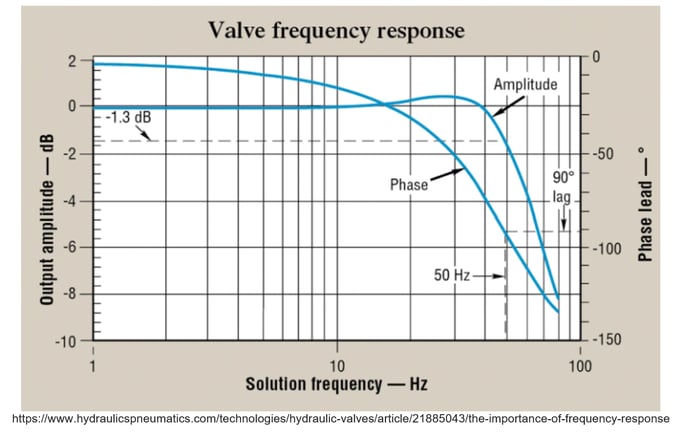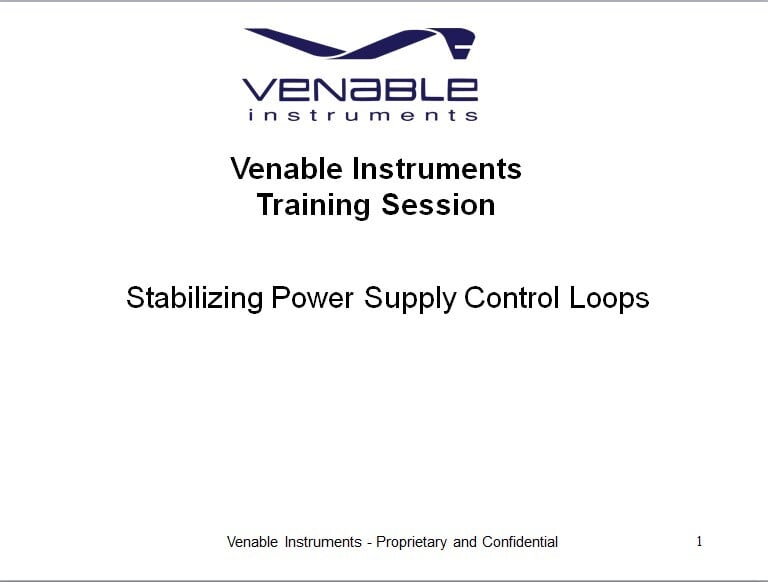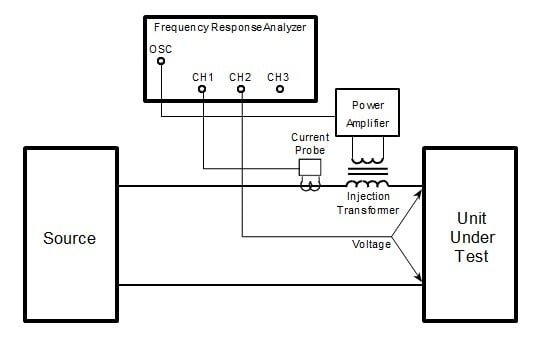Benefits of Frequency Domain Analysis in the Design and Optimization of Motion Control Systems
By Avinash Baskaran, Research Consultant - October 06, 2020
Introduction
Engineers, Let’s get on the same wavelength with Frequency Response Analysis. Analysis of the frequency response of a system (its phase and gain characteristics with regard to frequency when a sinusoidal input is passed) can provide key insights unavailable by time domain analysis. In designing and optimizing motion control systems, frequency domain translation of time domain data can therefore allow much greater clarity and simplicity in the analysis of system outputs.
“Frequency response analysis provides valuable information that can
be used to understand and optimize the system performance”
- Kollmorgen
In the analysis of the stability of a feedback loop, multiple frequency-related characteristics may be desired, such as open loop gain. In this case, a frequency sweep of the feedback loop with a sinusoidal input injected in series with the loop will cause the system to respond with sinusoidal output which can be analyzed. In physical systems, the output will be delayed by a “phase lag” behind the input as the sweep frequency increases. The system’s output amplitude and phase lag can be described by Bode amplitude and phase plots, which are often used to represent frequency domain data and which consist of a plot of log gain (in dB) vs log frequency and phase shift (in degrees) vs log frequency. Such plots are very useful in determining the stability of feedback loops and reveal useful information, such as the phase margin, gain margin, and loop bandwidth. In motion control, frequency response data and analysis through Bode and Nyquist plots can be used to determine if the system will meet specifications and design the PID controller coefficients.
“...it lets users change both PID and mechanical parameters
of the model and observe their effects on system performance”
- MotionControlTips.com, on Frequency Response Analysis
Consider the design of electrohydraulic servo and proportional valves, common in hydraulic actuation. To analyze the frequency response of a proportional valve, it is induced to oscillate under a controlled sinusoidal input. The frequency of this controlled input is varied and the output frequency, amplitude and phase lag are recorded and analyzed to characterize the valve.

“The frequency response method is more reliable than
the step response, because of the way in which distortion and noise
are inherently rejected in the frequency response test”
- Hydraulics and Pneumatics
Factors including gain, natural frequency, loop bandwidth characteristics, and phase margin can be gleaned from frequency response analysis. Examination of the phase and amplitude Bode representations of system responses including open loop, closed loop, disturbance rejection, control output and others can help engineers quickly analyze and optimize servo systems to maintain outputs and reject disturbances. Servo loop and other loop gains can be more generally analyzed, allowing for desired frequency response across the frequency spectra and compensations for system resonances. In this way, system performance and stability can be tuned and optimized efficiently.
“The tuning operation of the complex gain controller
requires its frequency-response function.”
- Filho et. al. in SciELO, 2009
Another particular advantage of frequency domain analysis is its ability to describe “transfer functions”, which aid in the analysis of individual components of complex systems. In plant-wide analyses, it is necessary to characterize the frequency response of a plant so that the controller can be designed to ensure stability and performance. System characterization, identification and tuning can be carried out quickly and effectively by Venable methods and instruments.
Alternatively, time domain analysis of motion control systems, referring to analysis of the response of a dynamic system expressed as a function of time consisting of the interaction between the transient response and the steady-state response, is, by contrast, generally very limited. It is generally less sensitive, less accurate, less robust, and cumbersome to carry out in the analysis of higher order systems. Time domain analysis often requires ‘trial and error techniques’, necessitating inefficient repeated testing by hand. This type of testing is often carried out by careful alteration of input parameters of a known low bandwidth stable system until errors are detected. By contrast, analysis in the frequency domain is inherently less iterative and more efficient, often providing more accurate and relevant insights into the measured quality of the behavior of a system. Frequency response analysis (FRA) is also often necessary for frequency-dependent design (including of filters) and for motion control systems which demonstrate resonance characteristics.
Conclusion
Venable Instruments Frequency Response Analyzers and System Identification Analysis and Design (SIAD) Software can be used to measure, understand and optimize the performance of power and control systems in various parameters including gain, stability, natural frequency, sensitivity, disturbance measurements and disturbance rejection among others. Find out more about how our FRAs and SIAD Software can help you optimize and characterize the response of your systems.
Resources:
-
Relating Converter Transient Response Characteristics to Feedback Control Loop Design
-
The complex controller for three-phase induction motor direct torque control
-
Effects of PID and machine parameters on positioning-system performance



